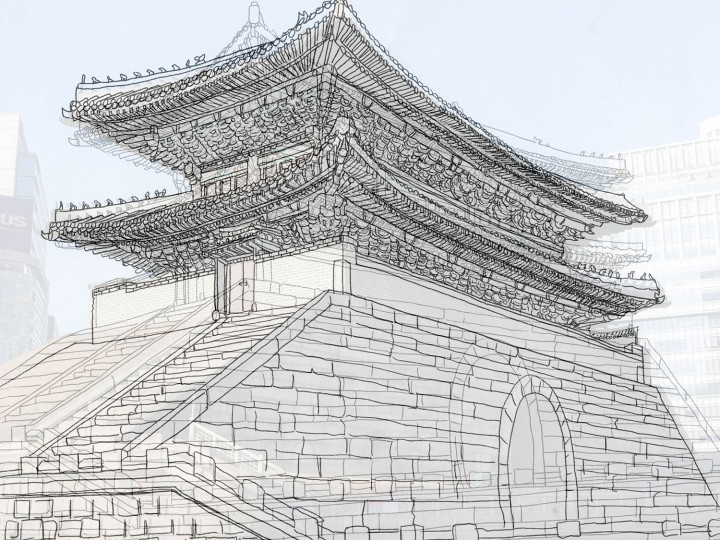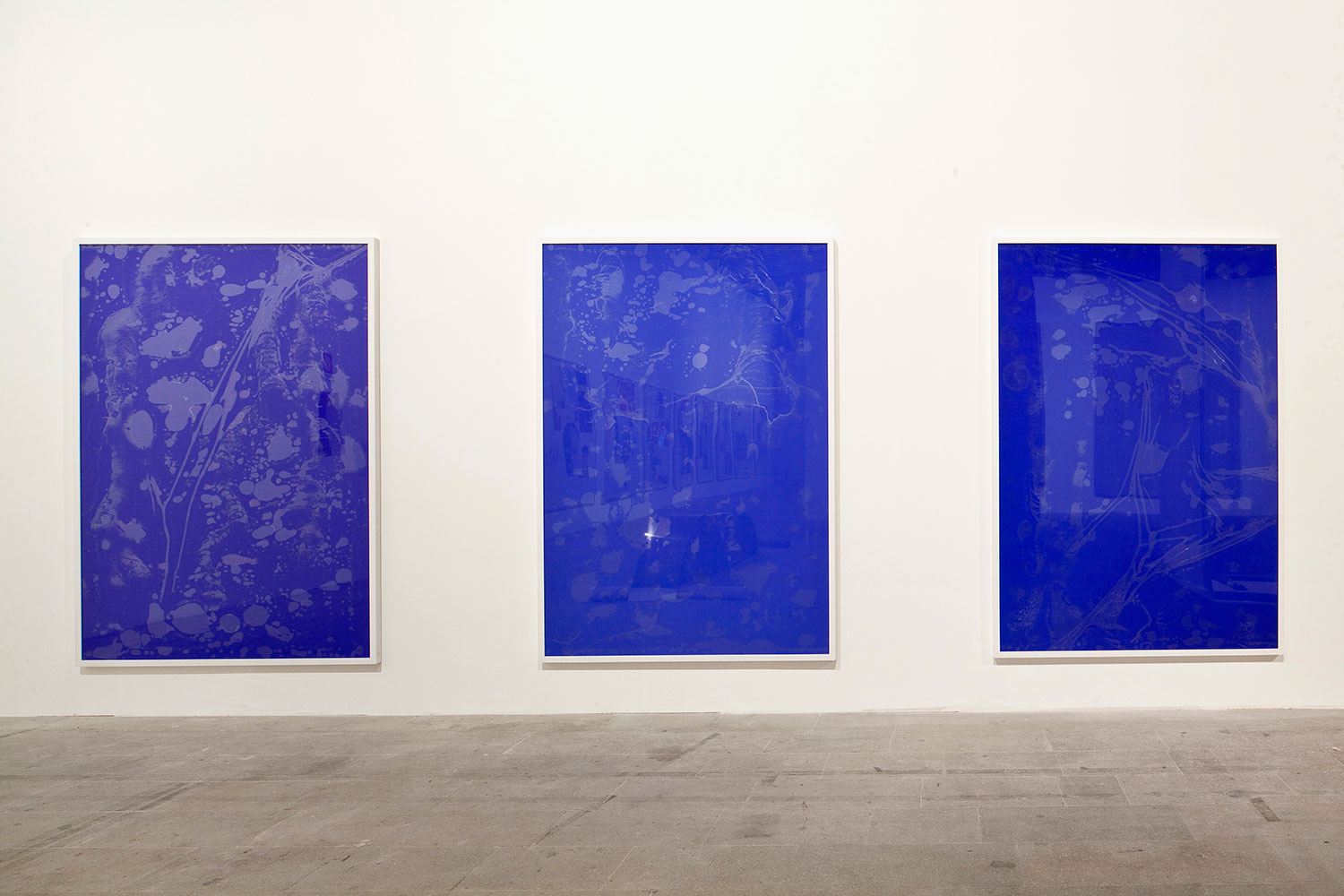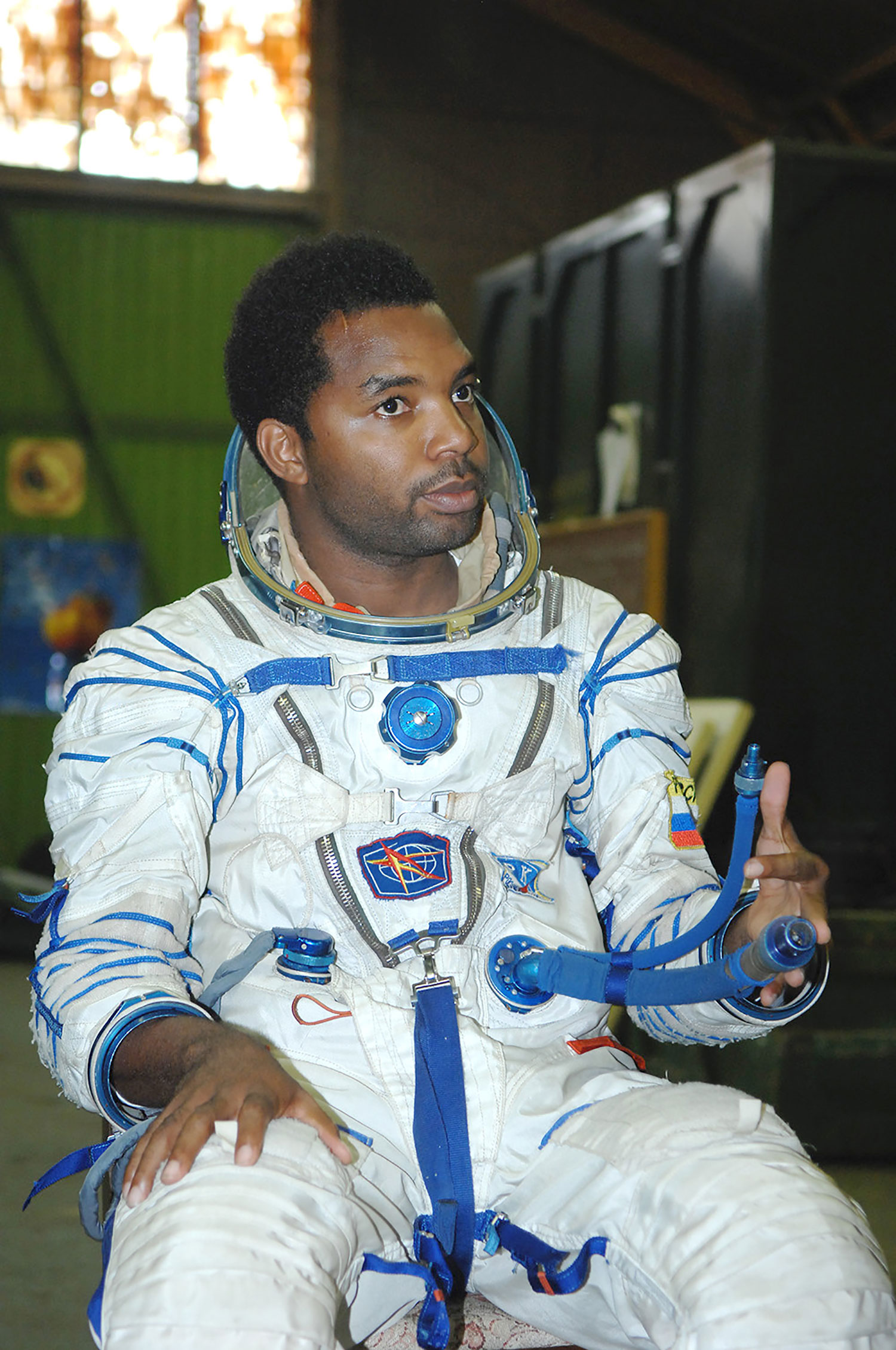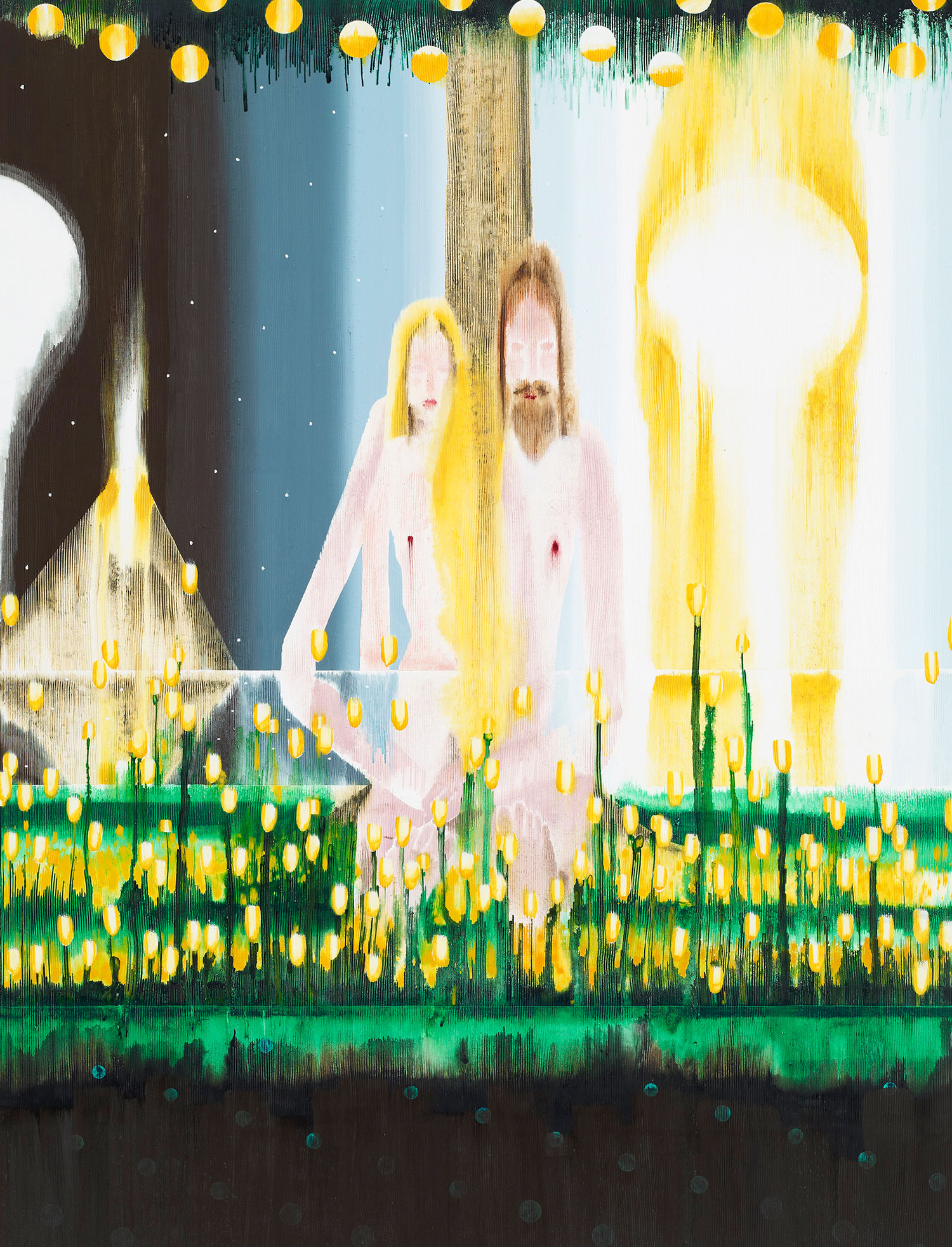
Yilmaz Dziewior: Before working together as a duo, each of you had a career as a solo artist. What were the reasons for collaborating? Do you still continue to produce work as individual artists?
MOON Kyungwon & JEON Joonho: Having participated in numerous exhibitions, we began discussing our concerns about contemporary art: its implications in our lives, its expendability, the absence of critique, etc. And we decided to create something practical — practical art, that is — as well as introspective; something that would provide us the opportunity to reflect on ourselves. So, we began asking questions: “What is the social function and role of art in the contemporary world?” And the opportunity provided us with motives to find out what other artists were thinking about. Thus, the project became a collective and a collaborative effort with others.
We also augmented the project with a more detailed plan to make a two-channel film based on the dialogues and discussions we had carried out with other artists and experts. It was then that our questions began to be answered, as we came up with drafts of scenarios for the film and expanded our scope into the humanities. Thus, a project entitled News from Nowhere(2012) had begun — a collaborative project involving architects, industrial and fashion designers, scientists and engineers; we have designed a project that aims to reflect upon the objectives of contemporary art and society in general, ultimately envisioning the future. And of course, apart from News from Nowhere, we each have our own works in progress.
YD: For your installation Voice of Metanoia (2012) at the last Documenta, one of the components was an “archive” of clothes and other everyday objects by a fictional multi-national corporation, which became the new social system in your utopian — or better dystopian — film El Fin Del Mundo [The End of the World] (2012). What status do these objects have in your work? They seem to be a hybrid between design and art objects.
MK & JJ: The futuristic objects and structures that appear in our film are more than just ordinary props. These objects and residential dwellings, created from the ideas and scenarios that we’ve written, are products of the journey, which included listening to others. It was also our hope to approach our discourse in a more sincere and practical way, rather than wasting it as empty ideas (whether the objects are called art or not). Our questions are directed at the definition of fundamental aesthetics, the role of art and its meaning: “What do the futuristic dwellings of the aftermath look like? What type of clothing will the survivors wear? In what shape or form is water supplied in the future?”

YD: I find it very interesting that in El Fin Del Mundo work is not compensated with money but with citizenship and therefore with a state of belonging, which indicates protection. If citizenship and belonging didn’t stand for exclusion, could this life without money be a tempting alternative?
MK & JJ: In writing El Fin Del Mundo we tried to reflect the current situations in our society — socially, economically and politically. While money, the main medium of current capitalist economies, has disappeared in this special setting, another medium that replaces money has emerged. TEMPUS, one of the multinational corporations that replaces the current government system, provides Aquari — a capsule-form candy that contains essential nutrients and water for survival — as the monetary medium, in return for labor. The people use Aquari as their money. Aquari was designed and formulated in collaboration with the Japanese design group takram.
YD: In addition to the installation Voice of Metanoia and the film El Fin Del Mundo, you published a book: News From Nowhere. Why did you choose these three very different modes of production, presentation and distribution?
MK & JJ: News from Nowhere is an open platform where everyone can look at and discuss our current situation, not only in terms of art but also science, religion, humanities, society and education. It is our sincere hope for the discussion process to be introduced into our society and to the world. We’d like for everyone to participate in the process of questioning, whether they are making a film about it, writing a book or even sending electronic newsletters.
YD: To understand your activities, the process (including workshops, seminars and other discourse-oriented events) seems as important as the actual visual results.
MK & JJ: The initial motive was to seek alternatives by listening to and collaborating with others outside the usual scope of the arts. Thus, our meetings and discussions were as important as the exhibitions. Our process, which included meetings, workshops and seminars, conveyed our sincerity and the validity of the final products of our exhibition. This is the same as eating a meal made from the harvests that farmers have toiled to produce.
YD: The title and inspiration of News from Nowhereis taken from a late 19th-century book by William Morris. Like you, Morris was interested in relating art and design to social and political issues. How did you come across his activities?
MK & JJ: We do not intend to suggest the utopia described by William Morris. Moreover, we do not intend to provide any kind of answers or convey some sort of message through this project. We also would like to stress that we are not putting out grave propagandistic slogans, encouraging others to overthrow all current values or that we should practice resistance and fight the system. The term “RE-THINK” in this project does not in any way suggest “RE-SET,” which is often perceived as an action to defy everything and restart. Instead, the prefix “RE-” is used as a way of calling for sympathetic solidarity. To us, the correct role of art is not providing the right answer; rather, it is to share the very process of questioning and discussing issues. Therefore, this project does not end in the present. Rather, it will be a continuous one that will incorporate the deeper, intensified and various voices that we experience as we progress, building upon what we have already experienced. This is what makes our project differ from Morris’s.

YD: In your installation Voice of Metanoia – Two Perspectives, made for the Korea Artist Prize 2012, you refer to European art history of the 19th century and its relation to social and political issues by quoting the painting Bonjour Monsieur Courbet painted by Gustave Courbet in 1854. How would you define your interest in this period?
MK & JJ: That painting severely criticizes the errors in the arts that failed to realize the conflicts that emerged between the bourgeoisie and the nobles of the 19th century in France. We deeply respect Courbet’s attitude and resistance. We wanted to show our audiences that although the people of his times have disappeared, the problems that he faced are still valid today, right beside us. Thus, we erased the figures from the original painting and reproduced it as a carpet. The work, beyond its presence as a reproduction of Courbet’s painting, is a reinterpretation of the times as a new environment and chapter.
YD: Why did you invite Yu Jin Gyu to do a performance in your installation Serene Landscape?
MK & JJ: Yu is a pioneer in the Korean mime scene, and has performed on numerous occasions works regarding the military authoritarianism and dictatorship of modern Korean history. Moreover, Yu has continuously sought to provide new and experimental forms, ceaselessly resisting the repetitious character of Korean theater. This was the main reason why we invited him to be the first “Courbet.” The second production included lectures by humanities and social research experts or aestheticians; the third, performances by indie bands, experimental musicians, filmmakers and visual artists; the fourth and most recent, a dialogue with an editor who has been exploring contemporary aesthetics through original design experiments.
YD: How would you define your relation to your own cultural background? It seems to me that, in relation to Korea, you are more interested in its possible future than in its past.
MK & JJ: We’d like to borrow a quote from one of our collaborators, the poet Mr. Ko Un: “To me, there’s no yesterday’s poem. My excitement lies only within what I write today.” Korea has a dark history of its own. It is important not to forget about it, but it’s also quite important not to be confined within the boundaries of the past. Moreover, we must open our eyes and ears to the world of empathy, meanwhile freeing ourselves from the geographical confinement that is the Korean Peninsula.
YD: What are you currently working on?
MK & JJ: Starting from an exhibition in Chicago, we have numerous exhibitions planned as well as another film in preparation. During and between exhibitions, we’re also planning to hold various events with our collaborators in News from Nowhere, to not only present an exhibition but to show the collaboration process and its implications. Moreover, we plan to incorporate the features and histories of the places where our exhibitions will be held. For example, in Chicago, we’re planning to present a lecture by one of our collaborators, the architect Toyo Ito, and also a special forum with Winy mass, Yusaku Imamura, and Lewis Hyde. We’re also planning to provide seminars and workshops where the public can participate. Another exciting journey awaits us.





